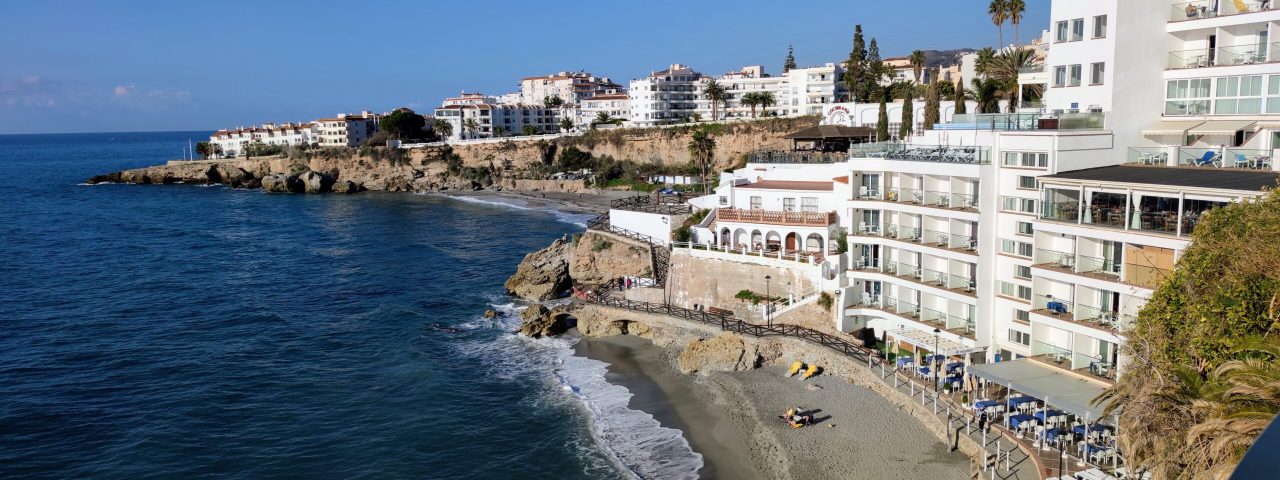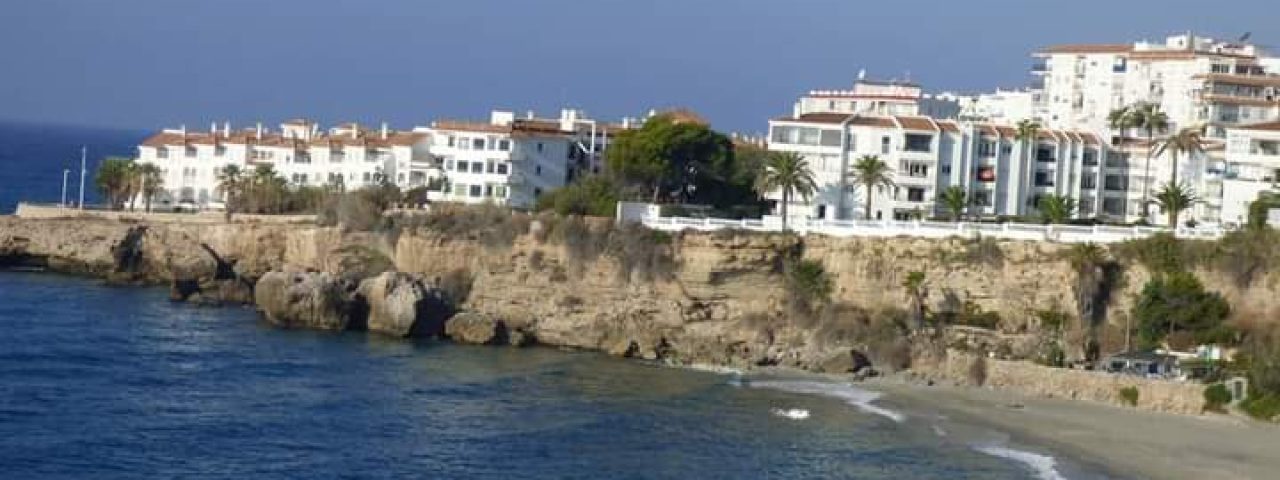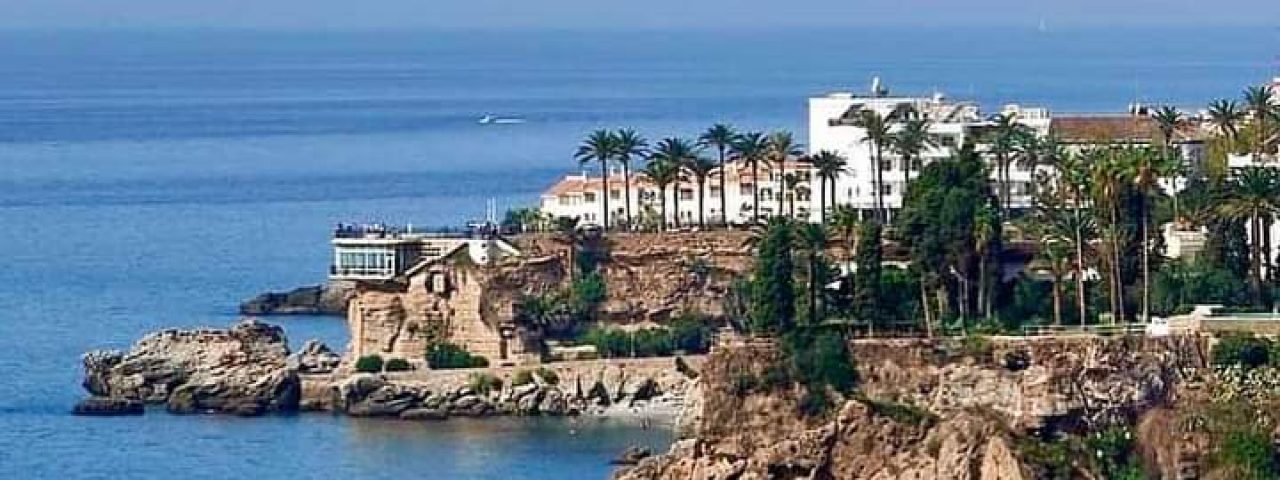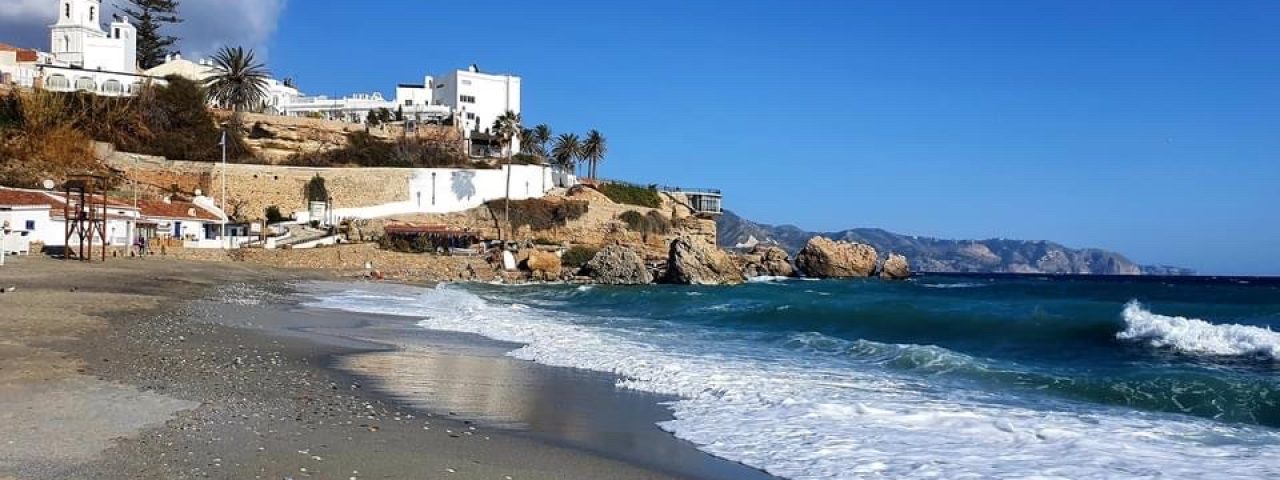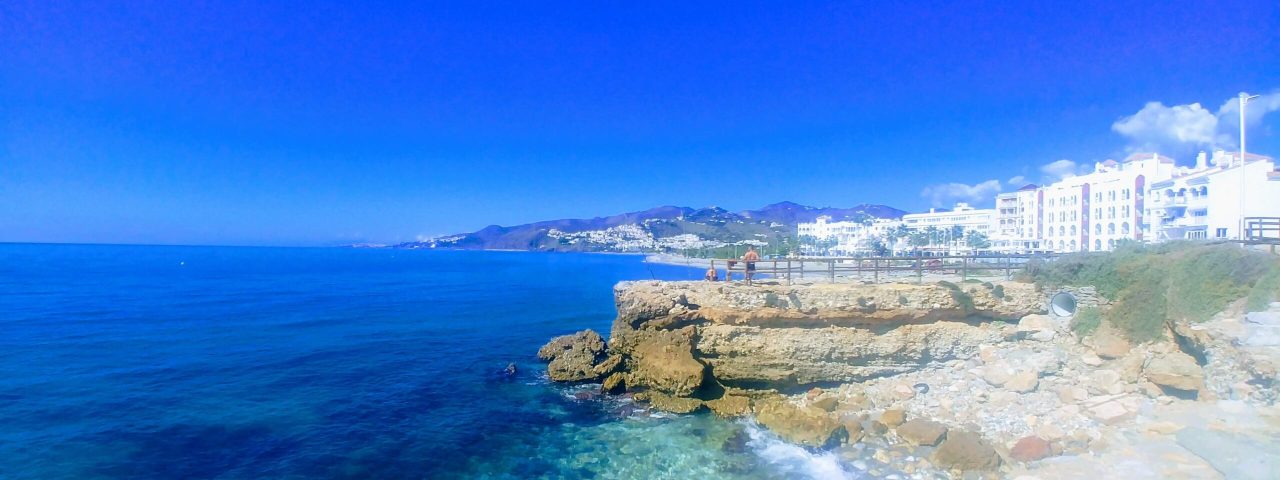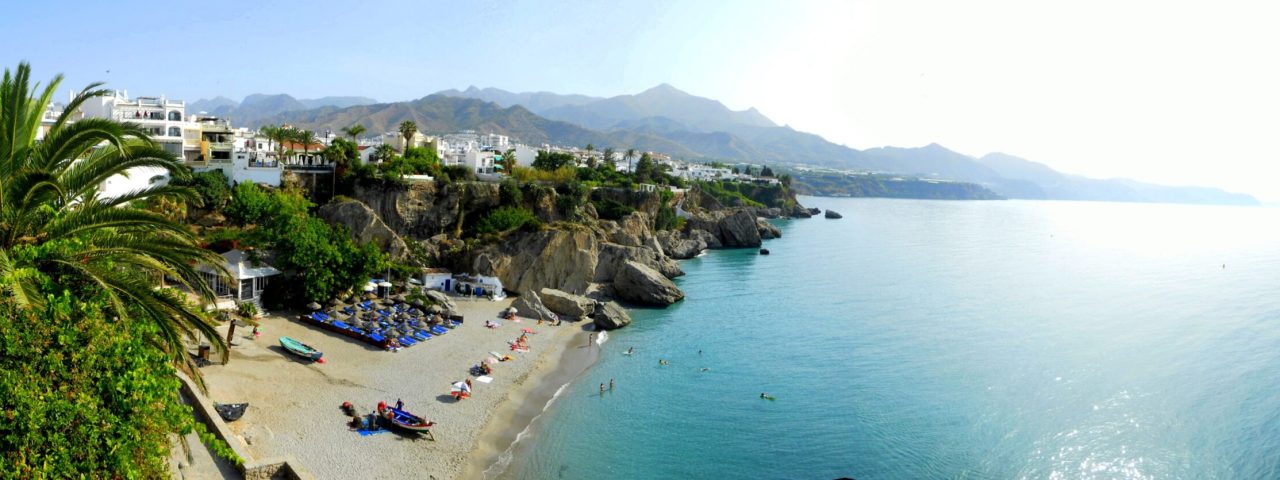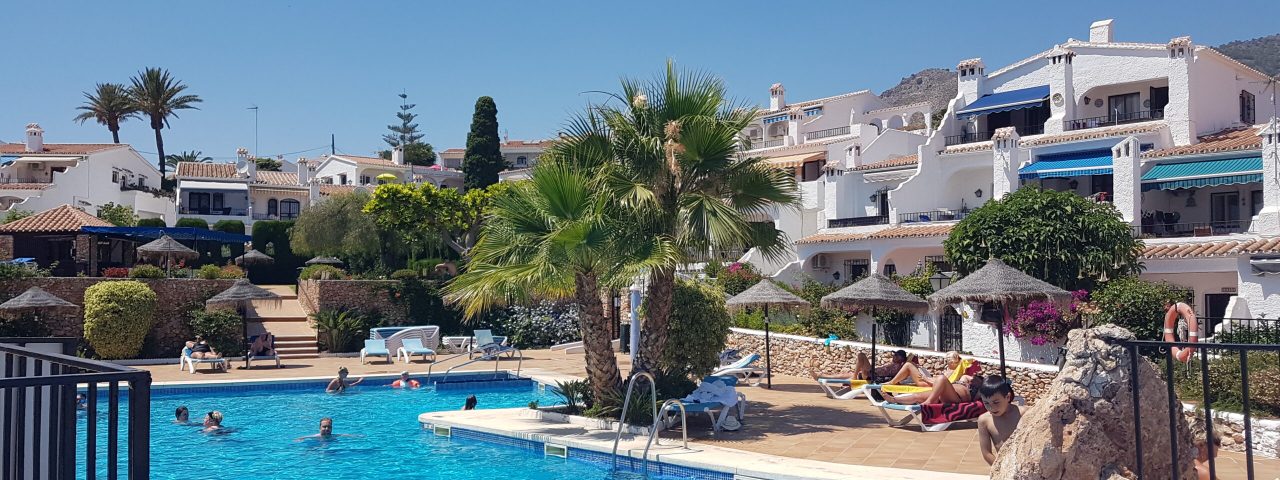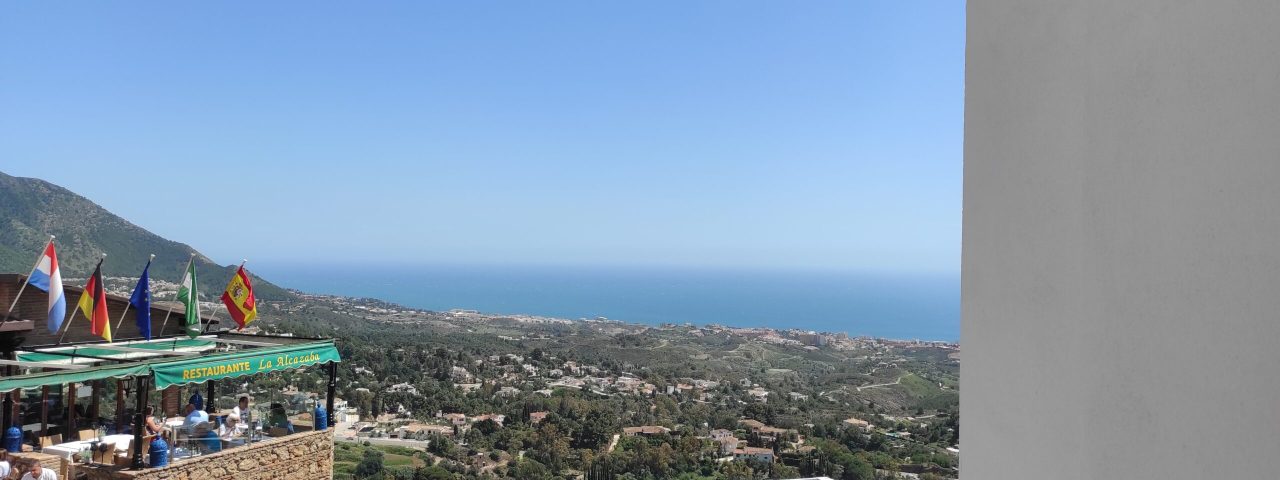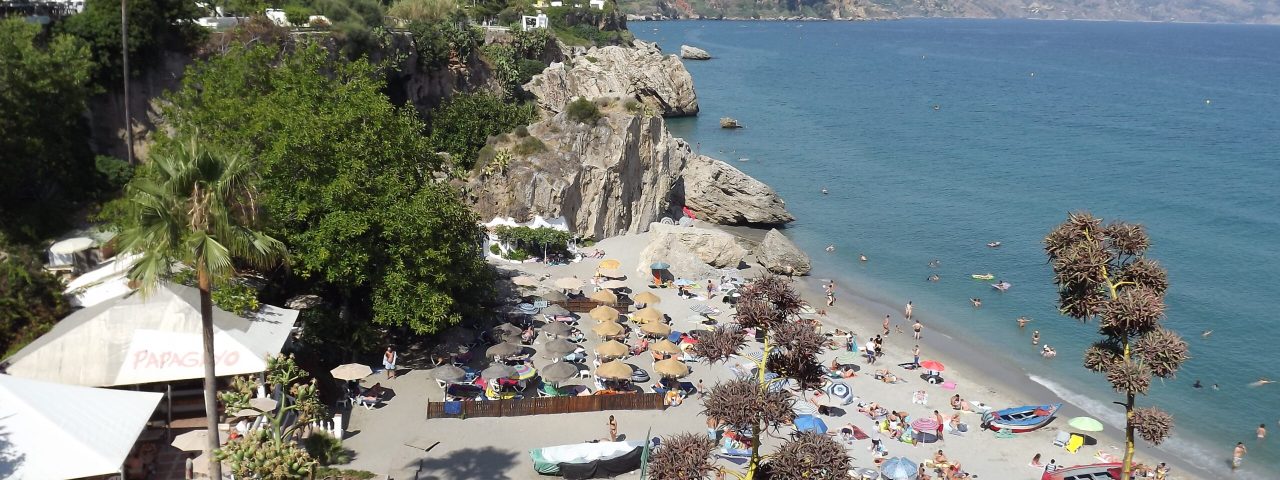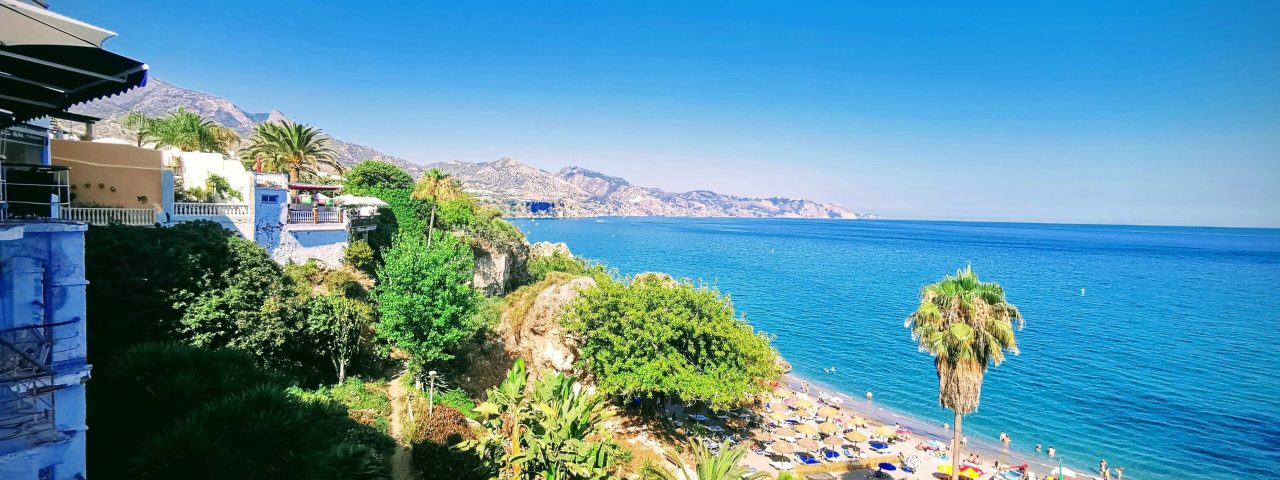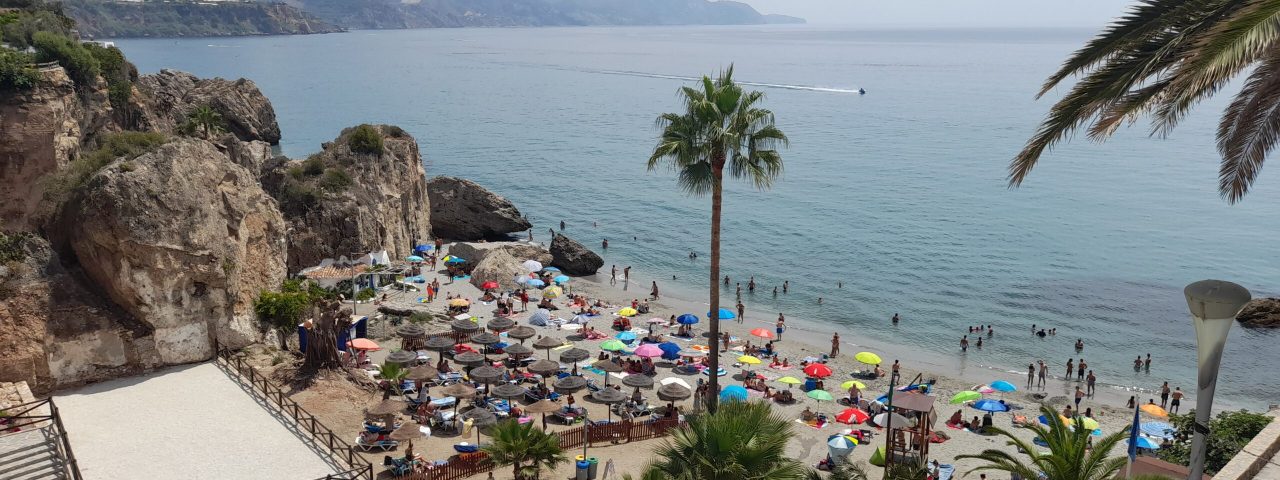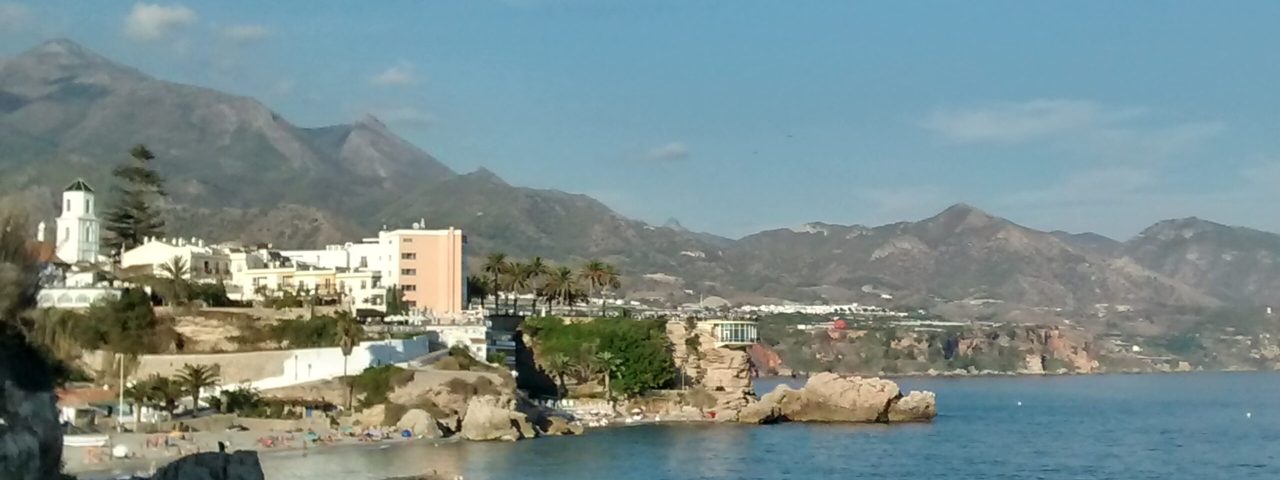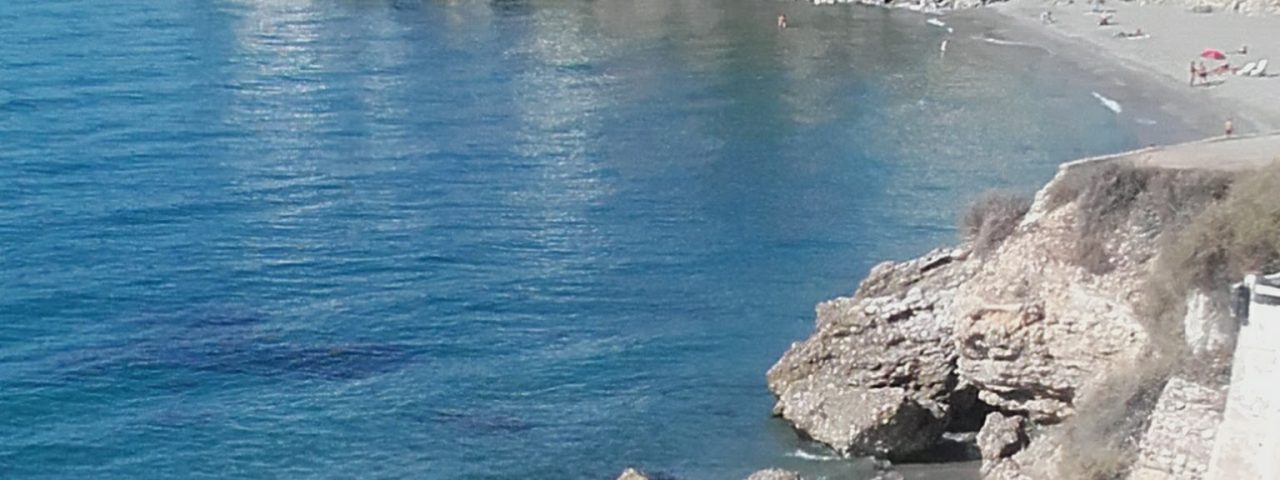Nerja’s architecture is a mix of traditional Andalusian whitewashed houses, narrow cobblestone streets, and more modern buildings, with a few remnants of its Roman and Moorish past. One of the city’s most iconic landmarks is the Balcón de Europa, a stunning promenade offering panoramic views of the Mediterranean Sea and the surrounding coastline. This picturesque spot is popular among tourists and photographers and is often used as a venue for outdoor concerts and events.
The Nerja Caves (Cueva de Nerja) are another must-see attraction, located just a few kilometers from the city center. These massive caverns feature impressive stalactites and stalagmites, as well as prehistoric paintings, and are one of the most important archaeological sites in Spain. Visitors can explore several chambers of the caves and even attend the annual Festival Internacional de Música y Danza, which is held inside the caves, providing a unique cultural experience.
For those interested in history, a visit to the Church of El Salvador is essential. Built in the 17th century, this beautiful Baroque and Mudéjar-style church is a centerpiece of Nerja’s religious heritage. The nearby Aqueduct of El Águila, a 19th-century structure, is another architectural marvel that reflects the town’s historical significance and engineering prowess.
